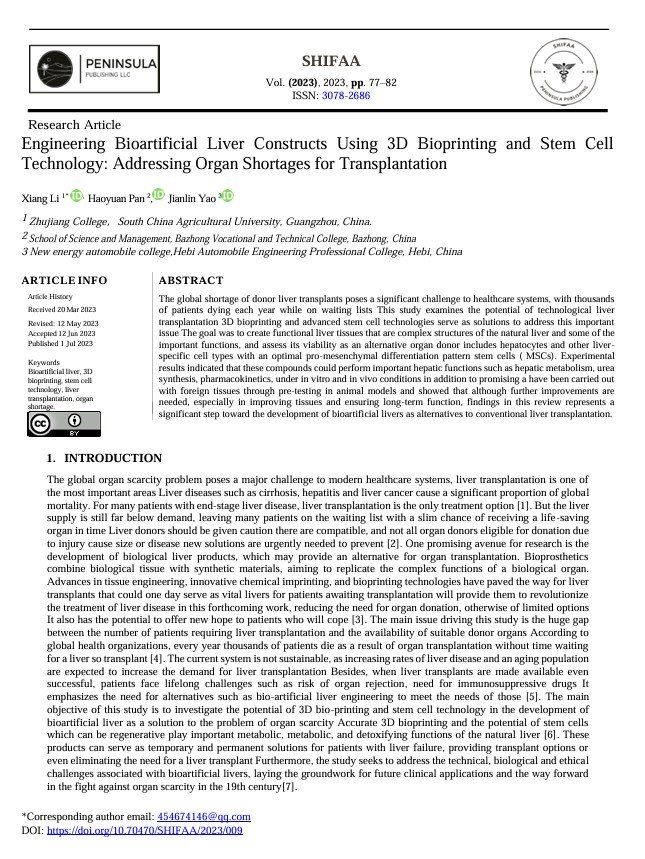Engineering Bioartificial Liver Constructs Using 3D Bioprinting and Stem Cell Technology: Addressing Organ Shortages for Transplantation
Main Article Content
Abstract
The global shortage of donor liver transplants poses a significant challenge to healthcare systems, with thousands of patients dying each year while on waiting lists This study examines the potential of technological liver transplantation 3D bioprinting and advanced stem cell technologies serve as solutions to address this important issue The goal was to create functional liver tissues that are complex structures of the natural liver and some of the important functions, and assess its viability as an alternative organ donor includes hepatocytes and other liver-specific cell types with an optimal pro-mesenchymal differentiation pattern stem cells ( MSCs). Experimental results indicated that these compounds could perform important hepatic functions such as hepatic metabolism, urea synthesis, pharmacokinetics, under in vitro and in vivo conditions in addition to promising a have been carried out with foreign tissues through pre-testing in animal models and showed that although further improvements are needed, especially in improving tissues and ensuring long-term function, findings in this review represents a significant step toward the development of bioartificial livers as alternatives to conventional liver transplantation.
Article Details

This work is licensed under a Creative Commons Attribution 4.0 International License.
